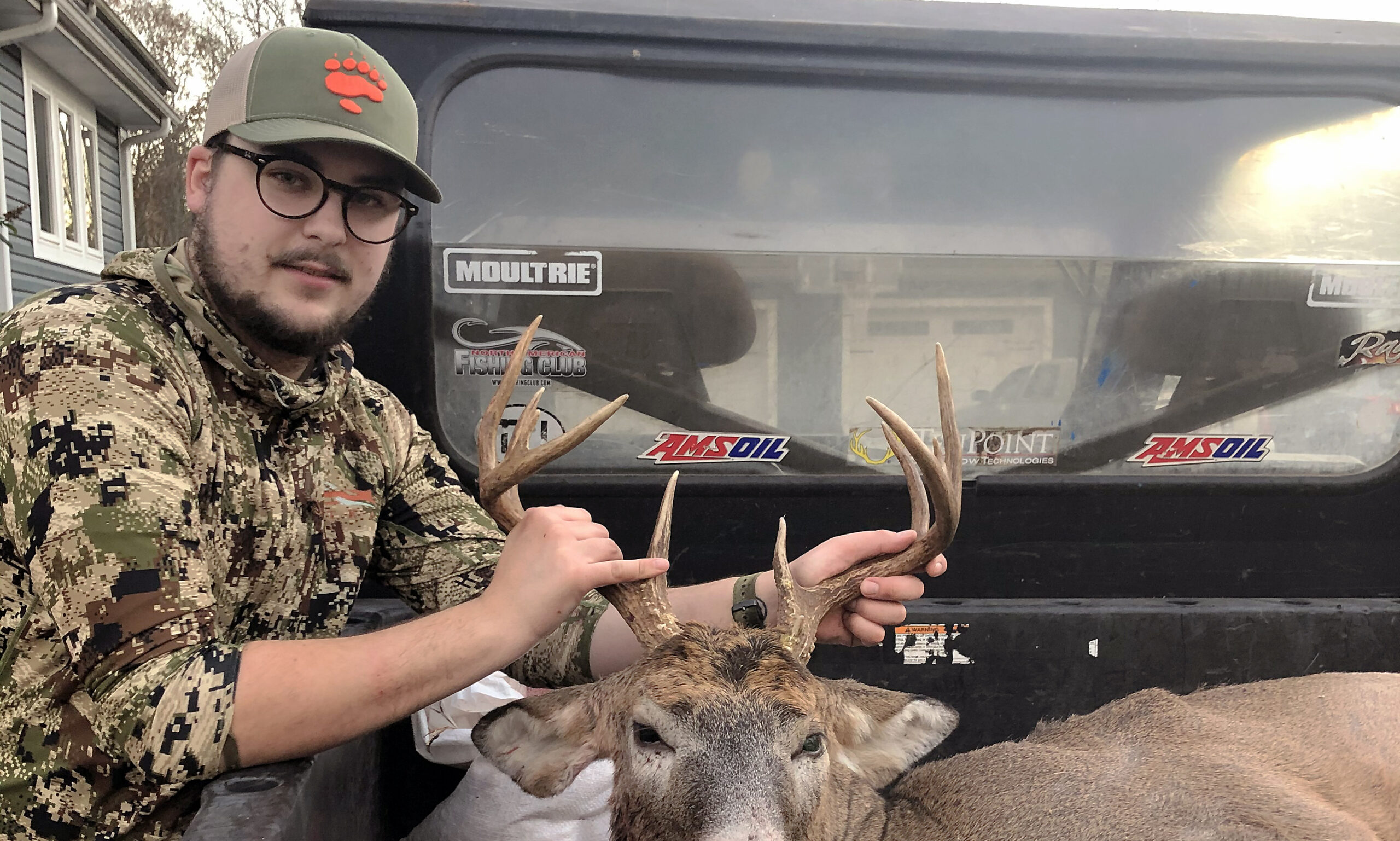MORGANTOWN, W.Va. – The rut is in full swing, which means a lot of our social media feeds are going to be flooded with pictures of big bucks. Those gripping and grinning have either been watching those big boys for a long time or got lucky that it crossed into their shooting lanes, but either way, it’s one of my favorite times of the year to see all the smiling faces.
In a few weeks, we’ll see those same smiles from gun hunters, maybe even young kids who got their first deer in what’s looking like will be a cold, West Virginia winter. Heck, I got my first deer this past Monday and I haven’t been able to wipe the goofy smile off my face since as I keep running those few hours through my head on repeat. I’ve since been processing the meat and taking care of the 10-point rack and hide to get it mounted.
But I’ve noticed as the pictures roll in not many bucks being smaller than a small 8-point. This could either be because of the algorithm or all my friends are getting extra lucky this year. While I believe in luck, there is always something behind a trend.
That thing is the 17% drop in buck kills around the state in 2019. Last December, hunters harvested 36,796 bucks over the two-week season. West Virginia Division of Natural Resources Assistant Chief of Game Management Gary Foster noted that a heavy oak mast drop in the southwestern part of the state and the season opening well past the “peak of the rut” played a role in the lower harvest numbers. While I am looking solely at gun season numbers, I would like to note that the harvest during archery season increased by 11% from 2018 and was 10% above the five-year average, but since the DNR doesn’t split up kills by sex in their releases, I can’t say with confidence the buck kill dropped during the long season.
Still, with the number of bucks killed during gun season, I can infer the decrease in the harvest has helped us this year. In 2018, hunters harvested 44,599 deer, and in 2019, 36,796. If you’re reading this in your living room in Monongalia or Preston counties, District 1 numbers fell more than 1,000 kills from 7,963 to 6,783 or 14.81%.
If it still isn’t clicking, lower buck harvests mean more mature bucks running around for us during the rut the following year.
Keep in mind, too, that this is all with a three-buck limit. Imagine what our social media feeds and our friends’ trophy walls would look like if our Natural Resources Commission would lower the buck limit. I’m going to use my 10-point as an example. As he walked out in front of our blind, my brother whispered to me it was the nicest buck he’s seen on his property in three years. In 2017, the buck season harvest in Ritchie County totaled 1,338. One year later it dropped to 1,065 and last year it rose to 1,244. We estimated the buck I killed was at least 2 1/2 years old, but let’s say he was born in the summer of 2017. With everything we know about deer and their home range, he likely has been on my brother’s property since birth, maybe moving around to adjacent property but mostly within the confines of that big tract of Route 50 farmland. I know, also, that since my brother started hunting that property and allowing others to do so long ago, he has implemented a strict rule about what bucks can be killed there. It has to be at least an 8-point, and it can’t be younger than 2 1/2 years old.
This self-management has produced some of the best deer I’ve seen come out of that county. Now imagine that on a state-wide scale. Take out the antler restrictions, sure, but think about what would happen if we lowered the buck limit to two. This would give more bucks a chance at growing up and, for people who harvest more meat after the current buck limit, would be taking more does per year.
I don’t know about you, but I’d like to keep seeing bigger bucks grace my social media feeds every year.
TWEET @andrewspellman_




